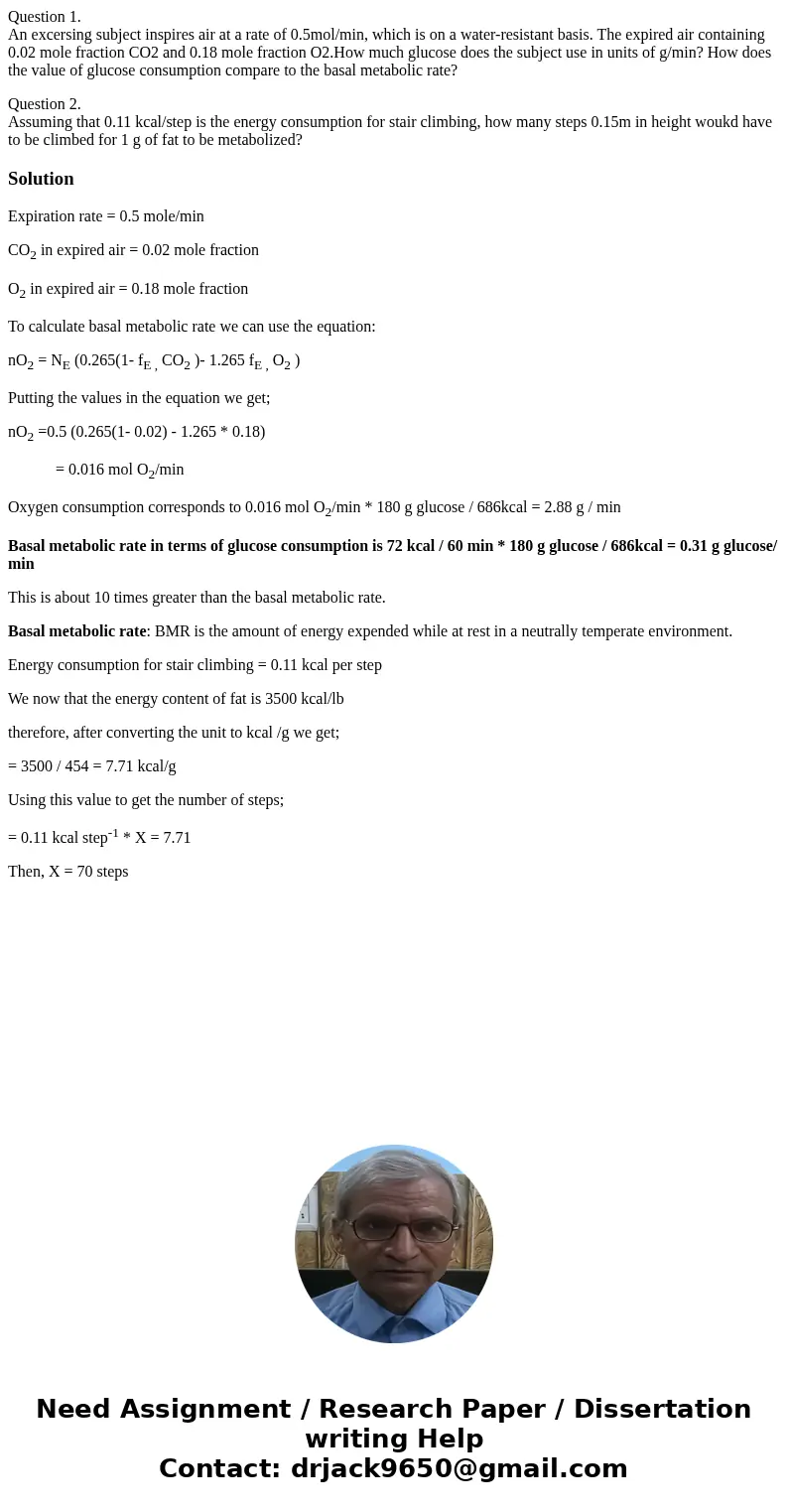Question 1 An excersing subject inspires air at a rate of 05
Question 1.
An excersing subject inspires air at a rate of 0.5mol/min, which is on a water-resistant basis. The expired air containing 0.02 mole fraction CO2 and 0.18 mole fraction O2.How much glucose does the subject use in units of g/min? How does the value of glucose consumption compare to the basal metabolic rate?
Question 2.
Assuming that 0.11 kcal/step is the energy consumption for stair climbing, how many steps 0.15m in height woukd have to be climbed for 1 g of fat to be metabolized?
Solution
Expiration rate = 0.5 mole/min
CO2 in expired air = 0.02 mole fraction
O2 in expired air = 0.18 mole fraction
To calculate basal metabolic rate we can use the equation:
nO2 = NE (0.265(1- fE , CO2 )- 1.265 fE , O2 )
Putting the values in the equation we get;
nO2 =0.5 (0.265(1- 0.02) - 1.265 * 0.18)
= 0.016 mol O2/min
Oxygen consumption corresponds to 0.016 mol O2/min * 180 g glucose / 686kcal = 2.88 g / min
Basal metabolic rate in terms of glucose consumption is 72 kcal / 60 min * 180 g glucose / 686kcal = 0.31 g glucose/ min
This is about 10 times greater than the basal metabolic rate.
Basal metabolic rate: BMR is the amount of energy expended while at rest in a neutrally temperate environment.
Energy consumption for stair climbing = 0.11 kcal per step
We now that the energy content of fat is 3500 kcal/lb
therefore, after converting the unit to kcal /g we get;
= 3500 / 454 = 7.71 kcal/g
Using this value to get the number of steps;
= 0.11 kcal step-1 * X = 7.71
Then, X = 70 steps

 Homework Sourse
Homework Sourse